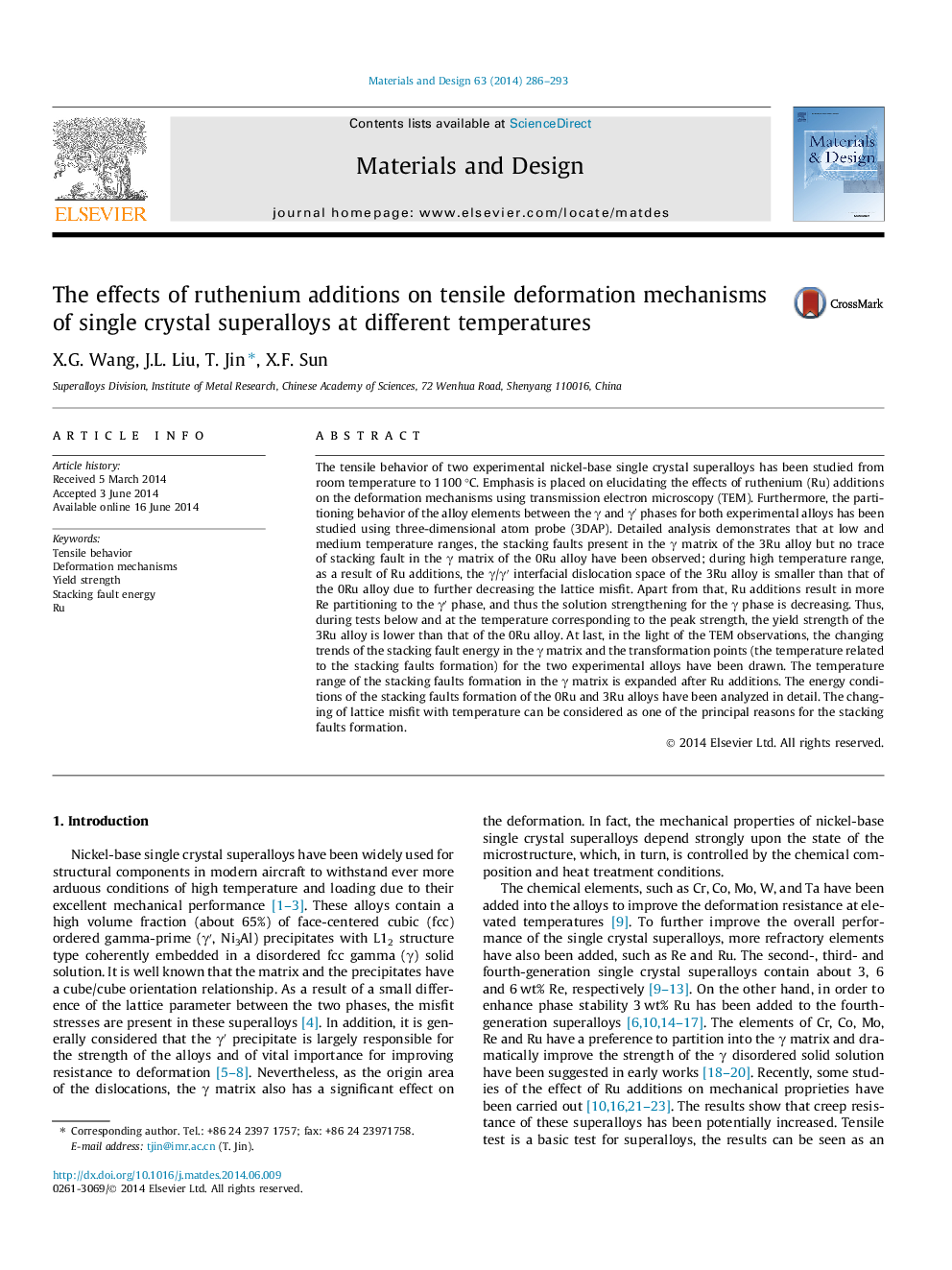| Article ID | Journal | Published Year | Pages | File Type |
|---|---|---|---|---|
| 829005 | Materials & Design (1980-2015) | 2014 | 8 Pages |
•The deformation mechanisms have been changed by Ru additions.•The tensile properties have been discussed combined with the 3DAP analysis.•The SFs presenting in the γ matrix during tensile tests are unusual.•Ru additions expand the temperature range of the SFs formation in the γ matrix.
The tensile behavior of two experimental nickel-base single crystal superalloys has been studied from room temperature to 1100 °C. Emphasis is placed on elucidating the effects of ruthenium (Ru) additions on the deformation mechanisms using transmission electron microscopy (TEM). Furthermore, the partitioning behavior of the alloy elements between the γ and γ′ phases for both experimental alloys has been studied using three-dimensional atom probe (3DAP). Detailed analysis demonstrates that at low and medium temperature ranges, the stacking faults present in the γ matrix of the 3Ru alloy but no trace of stacking fault in the γ matrix of the 0Ru alloy have been observed; during high temperature range, as a result of Ru additions, the γ/γ′ interfacial dislocation space of the 3Ru alloy is smaller than that of the 0Ru alloy due to further decreasing the lattice misfit. Apart from that, Ru additions result in more Re partitioning to the γ′ phase, and thus the solution strengthening for the γ phase is decreasing. Thus, during tests below and at the temperature corresponding to the peak strength, the yield strength of the 3Ru alloy is lower than that of the 0Ru alloy. At last, in the light of the TEM observations, the changing trends of the stacking fault energy in the γ matrix and the transformation points (the temperature related to the stacking faults formation) for the two experimental alloys have been drawn. The temperature range of the stacking faults formation in the γ matrix is expanded after Ru additions. The energy conditions of the stacking faults formation of the 0Ru and 3Ru alloys have been analyzed in detail. The changing of lattice misfit with temperature can be considered as one of the principal reasons for the stacking faults formation.
